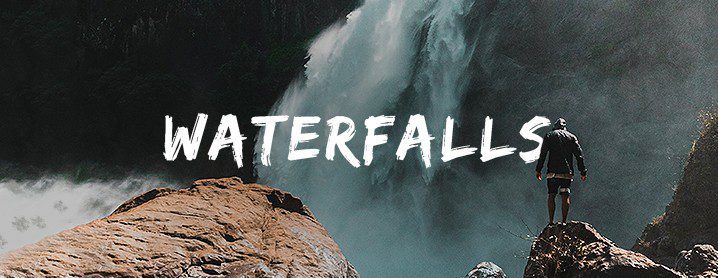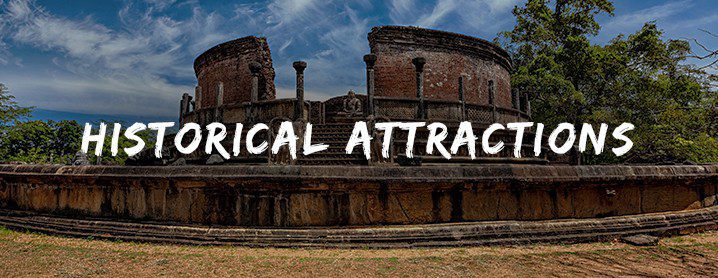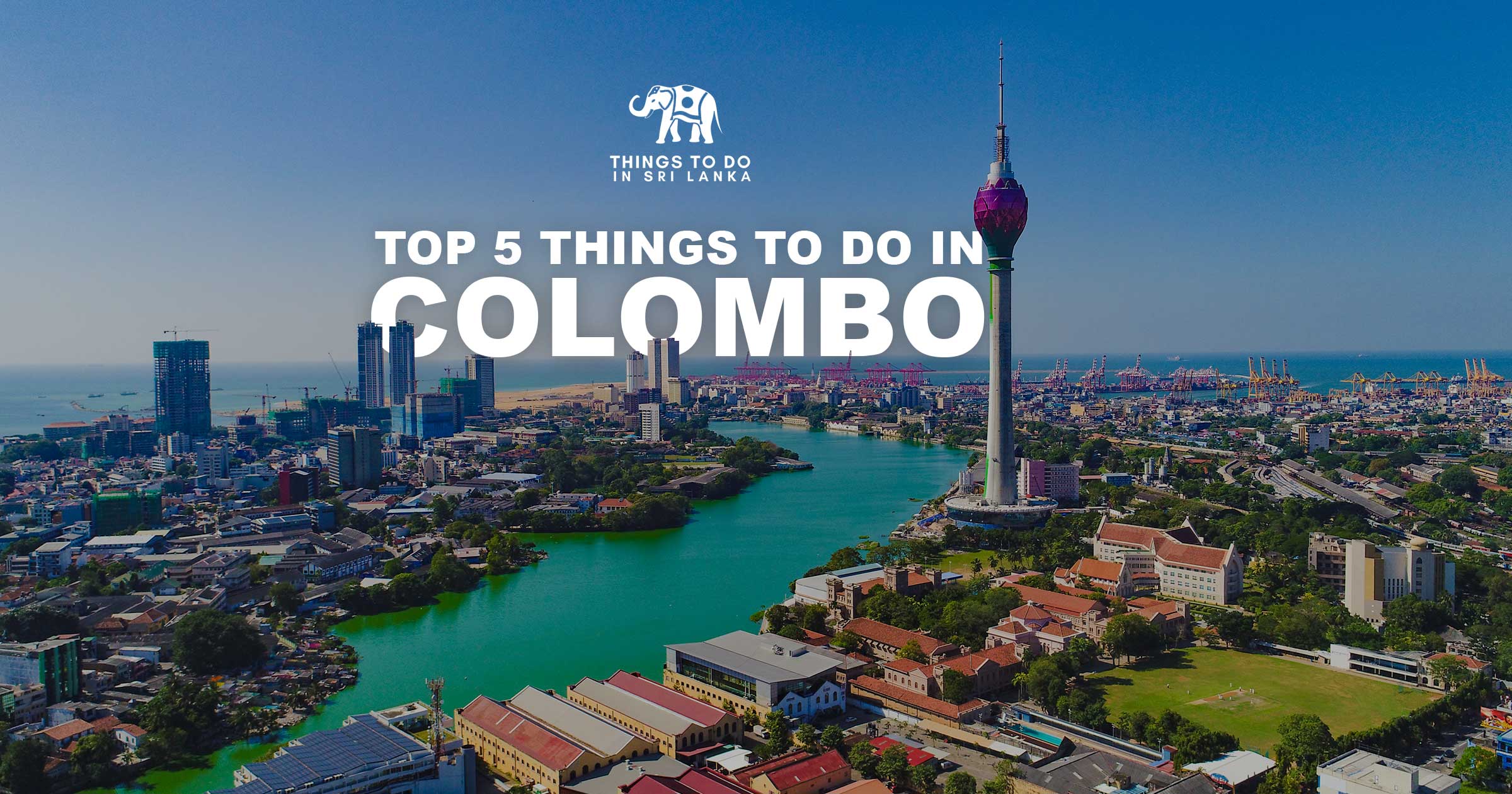
Top 5 things to do in Colombo
As a sprawling metropolis that emerges as a luxury travel destination in Asia, Colombo boasts colonial architecture, eclectic restaurants, high-end living, trendy shopping and a vibrant nightlife.
01. Galle Face Green
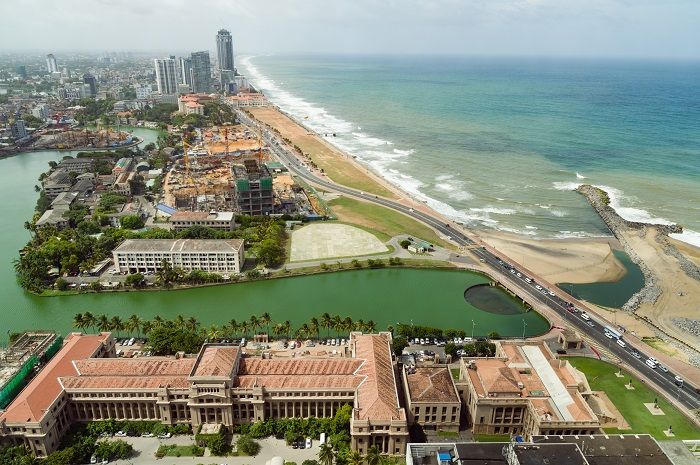
Galle Face green is the strip of beach in the center.
A little bit of history
The Dutch had used the beach strip to install their big guns against Portuguese. The name Gall Face is actually a derivation of the Dutch name “Gal Fausse” (Facing Galle). Over the year it has been a racecourse, cemetery, golf club, cricket/rugby playground and used for public gatherings. In 1859 then Governor Sir Henry Ward had declared it as a public park for the recreation.
Galle Face Hotel
The majestic colonial building to the south of Galle Face Green is the Galle Face Hotel. It is considered one of the oldest hotels in Asia. Originally a Dutch Villa, It was declared as a hotel in 1864 by the English though it was forbidden to locals then.
It is recommended paying a visit while you’re here to witness impressive colonial architecture. Also, you can enjoy an English afternoon tea (High tea) at the hotel. There is a museum too which showcases mementoes of the hotel’s early history.
Did you know? The Science fiction author Arthur C. Clarke wrote the final chapters of 3001: The Final Odyssey while staying in this hotel [source]
Street Food Stalls
This is quite an experience as well. Although there have been incidents that travellers were overcharged. Hence ask for the price before purchasing food items, don’t wait for the bill.
I’ll let Mark Weins tell you about the street food in Galle face green. He is an expert on the subject.
02. Gangaramaya Buddhist Temple

Golden Buddha statues in Seemamalakaya – Gangaramaya
Located on the banks of Beira Lake ( Google Maps ), this unique temple in the heart of Colombo will hold a special place in your memory. The temple was constructed in 1885 by the Ven. Hikkaduwe Sri Sumangala Thero in a small land surrounded by Beira Lake. The lake had covered a larger area back then.
The temple is famous among visitors for its vast number of artefacts and its architectural aspects. But not only that, you can observe the devotees perform their prayers and rituals.
Breathe in the enticing smell of incense sticks, burning coconut oils lamps and fragrant flowers. These are all parts of the cumulative spiritual experience you’ll have in a temple.
What to see in the temple?
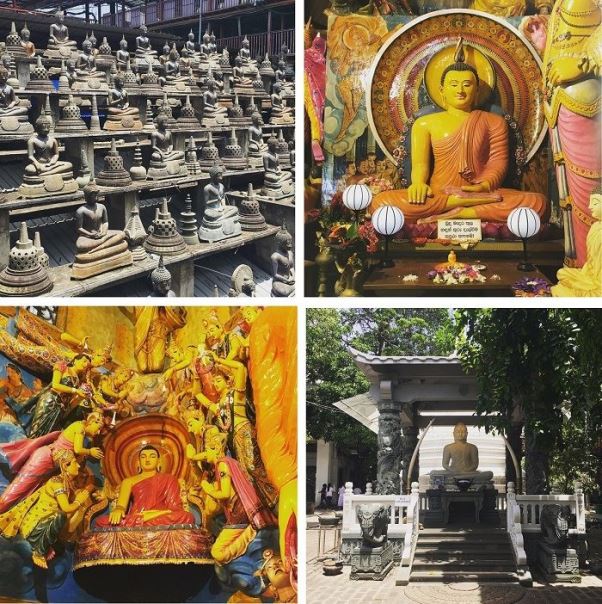
Clockwise: Borobodur Replica, Samadhi Buddha Statue, Jade Buddha statue, A Buddha statue surrounded by Deities| Photos by Sarah-Louise O’Hare
- The Image house – Garish but impressive collection of Buddha statues
- Samadhi Buddha Statue – This statue resembles the ancient statue in Anuradhapura. Cut out of white jade by a sculpturer from Myanmar.
- Ata-Visi Hall – The shrine room of 28 Buddhas.
- Bo Tree
- Borobudur Replica
- Relics chamber
- Museum – Houses the world’s smallest Buddha statue to vintage cars (You read it right)
- Seema Malaka – A separate building built on a floating platform in Beira Lake. Designed by Geoffrey Bawa after the old structure was collapsed in 1959. Used for inaugurations of monks. An instagrammable spot.
- The Library – Filled with old Buddhist scripts written Ola leaves. The highlight is the gold-plated “20th Century Impressions of Ceylon” which weights 4.5 Kg.
Did you know? – Seema Malaka was funded by a Muslim gentleman name Masaji in memory of his late son. ( Source )
Nawam Maha Perahera
This is one of the major cultural events in Colombo. “Nawam Perahera” the annual pageant that is held in February each year. It is a parade adorned with hundreds of elephants and dance groups representing various areas of the Island. Be advised though it can get pretty crowded. ( See the dates )
Essential information to visit
- Opening Hours: 06:00 AM to 10:99 PM
- Ticket Price: LKR 200
- Dress Code: Shoulders and legs must be covered.
- Address: 61 Sri Jinarathana Rd, Colombo 2
- Contact No: 0112 435 169
- Chief Monk: Galboda Gnanissara Thero
03. National Museum of Colombo

The building was constructed in 1876 by the British Government | Photo by Sarah-Louise O’Hare
The largest and oldest museum in Sri Lanka is located in the centre of Colombo just south of Viharamahadevi Park. You can schedule to visit both in a single run ( Google maps ).
The Colombo Museum was inaugurated in 1877 by Sir William Gregory who was the governor representing the British government. This impressive colonial building was inspired by Italian architecture.
The west wing and east wing were added later to accommodate the increasing number of exhibits. It is a treasure trove of cultural, natural and scientific artefacts. The museum is well curated and signposted but it’d help a lot if you are with a knowledgeable guide.
Facts about the Museum
- Area: 4.85 Hectares
- Founder: Governor Sir William Henry Gregory
- Architect: James G. Smithers (Department of Public Works)
- Architecture style: Italian (Large columns, pillars, lintels and semi-circular arcs)
- Builder: Wapchi Marikar
- Carpenter: S.M. Perera
- Construction completed in: 1876
- Cost of construction: LKR 119,993
- First Director: Amyrald Haly
[ Source ]
Structure of the Museum
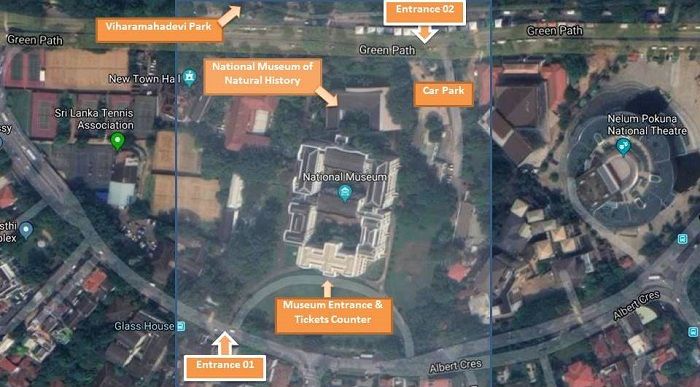
There are two entrances to the Museum premises but the entrance to the building is at the front. (Click to enlarge) | via Google Maps
The museum has two floors. The first floor is segmented by eras (Pre-Historic, Anuradhapura etc.) whereas the second floor is divided into various categories (Paintings, Textiles, Pottery etc.)
Notable exhibits
- Regalia and throne of the last king of Sri Lanka (1815)
- Watercolours of Irish artist Andrew Nicholl (1804-86)
- An Art gallery housing arts from all periods.
- Tholuwila Samadhi Buddha Statue ( 5th Century AD)
- Collection of ancient coins (3rd Century BC)
- Over 4,000 ancient palm leaf manuscripts
- Weaponry section housing ancient swords and colonial era guns.
- Traditional garments and pieces of jewellery worn by royals.
- Traditional masks, arts and crafts.
[ Source ]

The throne gifted by the Dutch to King Keerthi Sri Rajasinghe (1747-1782) | Photo by Sarah-Louise O’Hare
Essential Information and tips to visit
- Entrance fee (Foreigners)
- Adult – LKR 1,200
- Child – LKR 600
- Camera permit – LKR 250
- Video permit – LKR 2,000
- Opening Hours – 09:00 AM to 05:00 PM (Except public holidays)
- Above prices include the fee to visit Natural History Museum as well. It is located at the back of the main musuem next to the car park.
- You can take photos or videos with the permit but for personal use only.
- There is no AC inside the building so visiting early is recommended and do bring water with you.
- There are souvenir shop and two restaurants outside the building.
04. The sacred Kelaniya Temple
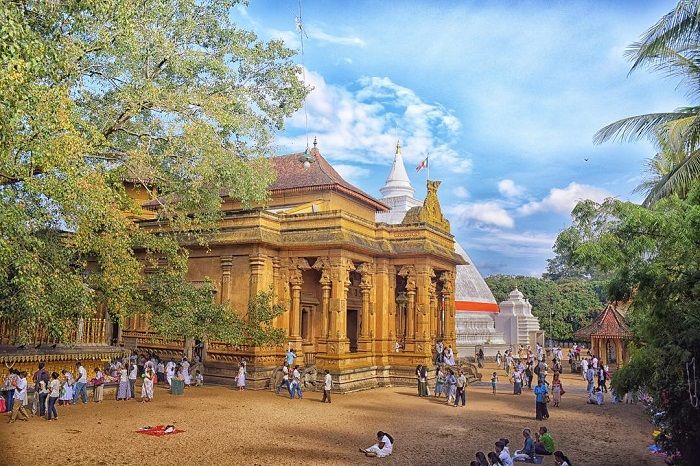
From left: The Bodhi, Image house and the sacred stupa | Photo by Imal Wickramage
One of the most sacred and oldest temples in Sri Lanka, The Kelaniya Raja Maha Viharaya located some 11 km from the downtown Colombo on the banks of Kelani River . It is famous for its historical significance and exquisite artworks.
Getting There
The temple is located a bit away from the main road hence hiring a taxi for this journey is recommended ( Google Maps ).
You can, however, take a bus running towards Gampaha/Kadawatha and get off at 4th Mile bus stop in Peliyagoda and take a tuk-tuk from there (4.2 km).
Also, there is a train station at Kelaniya at which most slow trains running on mainline stop. You can catch a taxi thence. (3.7 km) ( Train schedule )
Historical Importance
Lord Buddha visited Sri Lanka 03 times, first to Mahiyanganaya then Nagadeepya (Jaffna) and lastly to Kelaniya. Upon his visit to Kelaniya in 6th Century BC, he had bathed in a spot near the current temple is and proceeded to preach the nobles on Dhamma.
A stupa was built enshrining the gem-studded chair he sat upon and has been renovated several times into what it is today.
It was once destroyed by the Portuguese but re-established in 1767 by King Kirthi Sri Rajasinghe. Thus the temple is most revered by the faithful Buddhists as this very land was graced by the feet of Lord Buddha himself.
Paintings of Kelaniya Temple
The temple has quite a large image house with a high ceiling which is adorned with amazing artworks by a Sinhalese artist Mr.Solius Mendis in the early 20th century.
The artworks depict the life story of Lord Buddha Which were inspired by paintings in Ajantha caves and Sigiriya but have a style of its own. It took Mr.Mendis 20 years to finish these murals.
While you’re inside, don’t forget to see the large reclining Buddha statue and old murals of Kandyan era. The image house certainly evokes soothing feelings coupled with admiration and awe.
Even though the temple has a great history, we only see the works of the Kandyan era when it was later renovated.
Essentials information and Tips to visit
- Please wear appropriate attire covering shoulders and legs since this is a sacred ground.
- Avoid poya days and public holidays as it can get so crowded like the temple of the tooth in Kandy .
- There is no entrance fee but you can make a donation to the till boxes.
- Better to visit in the morning on a weekday to enjoy the tranquillity of the place.
Egoda Kelaniya Temple
There is a small temple across the river also known as Kithsiri Mewan Raja Maha Viharaya . In earlier days people had to use a Bascule bridge or small boat to get there but now you can use the bridge over the river.
This was originally a part of the main temple but said to have been separated after a tsunami causing the river to change its course. This tsunami had occurred some 2,000 years ago at the time of King Kelanithissa (200 BC). There is an interesting story behind this incident. ( Source )
Duruthu Perehera
The annual pageant of Kelaniya temple is held in pre-full moon day of January every year. This is a vibrant event consisting of three processions conducted to commemorate Lord Buddha’s visit in Duruthu poya day (Full moon day of January).
There are three processions “Uda Maluwa Perehera”, “Pahatha Maluwa Perahera” and finally the “Randoli Perehera”.
Randoli Perehera is the final procession is the most colourful cultural extravaganza many travellers eagerly look forward to attending.
The procession is a cultural showcase that includes, whip-crackers, fire-ball dancers, Elephants carrying flags, a tusker carrying the sacred relic, traditional drum beaters, Kandyan dancers, low-country dancers, masked dancers.
You can contact the temple for the dates (+94 11 2 911 505) or ask your host to contact them. [ Read more about the Duruthu Perahera ]
05. Viharamahadevi Park
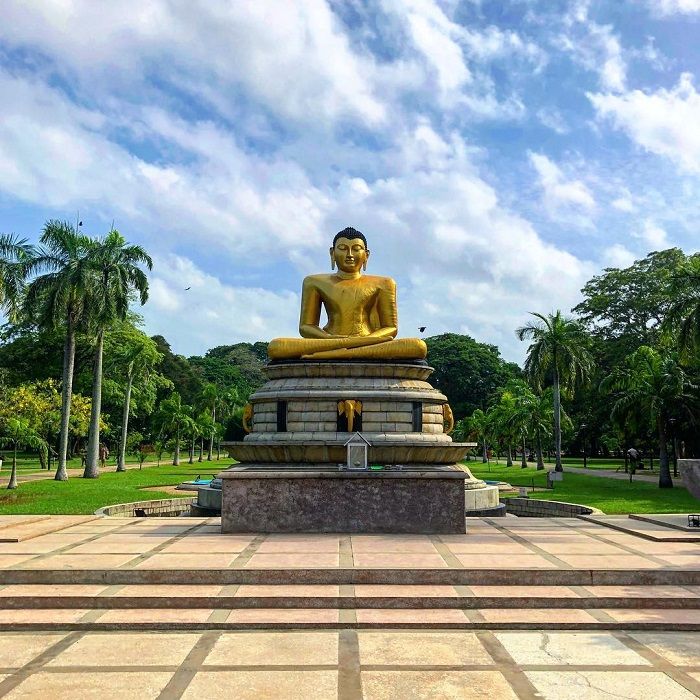
The Golden Buddha Statue and the park in the background | Photo by Char & Linds ( twowildtides )
This is the “central park” of Colombo where people flock to wind down, take a leisurely stroll or cycling. The park has something for everyone.
Especially if you’re travelling with kids, be sure to take them here. The park is well maintained and has many large trees and winding paths to wander about. It has its own amphitheatre as well.
Who is Viharamahadevi? She is a queen mother of the warrior King Dutugemunu (161 – 137 BC). There is a statue of her erected in the park.
The area the park is situated generally called Town Hall. It is located to the north of the Colombo Museum and 4km from Colombo Fort ( Google Maps).
There are many entrances to the park all around but the one at the Golden sitting Buddha statue is the main entrance facing the town hall (The white domed building to the west is the Municipal building of Colombo). Colombo Public Library is located in the south-west corner of the park.
History
The land originally belonged to the wealthy planter called Sir Charles Henry de Soysa . He donated the park for the government and was named Victoria Park in 1897. It was ceremonially renamed to Viharamahadevi Park in 1958 in commemoration of the heroic queen of ancient Sri Lanka
What to see & do
- Cenotaph War Memorial (Within the Public Library premises)
- A BAC Jet Provost used in WWII
- Children’s play area
- Lake with a suspension bridge
- Aquarium
- Cycling
- Paddle boat riding on the lake
Tips to Visit
- Entrance is free and the park is open 24 hours of the day.
- The park attracts various types of people. School children, students, lovers, joggers, filming crews for various teledramas but there are security personnel to restrict in any wrongdoings so it is a safe place to hang out.
- If you need a guide please ask your host to hire a reliable guy. Respectfully ignore any wannbe guides who jump in from nowhere to help. They’ll demand exorbitant amounts for their trouble.
- There is a cycle renting place ( Google Maps ). It is open 07:00 AM to 07:00 PM and charges LKR 100 per hour. You should produce your passport as collateral.
Conclusion
We hope you’ve got the information you were looking for and enjoyed the article. If it didn’t meet your need or you want to share your experiences in Colombo (good or bad), do leave us a comment and we’ll get back to you.
While you’re here, don’t forget to check out our ultimate travel guide to Colombo.
Hope you’ll have a pleasant time in Sri Lanka.
Text and photos are available under the Creative Commons Non-Derivations and Non-Commercial license



